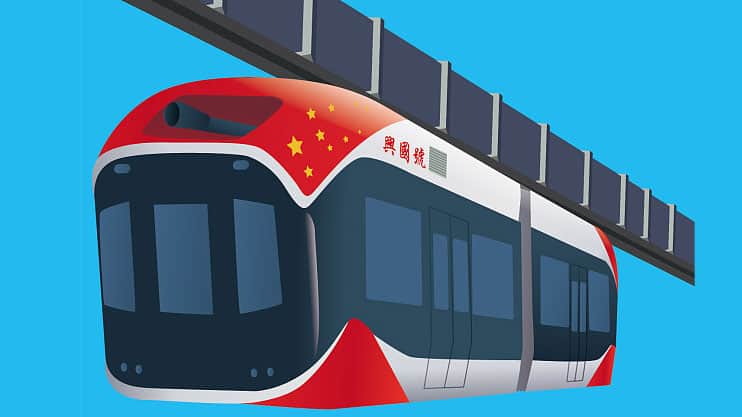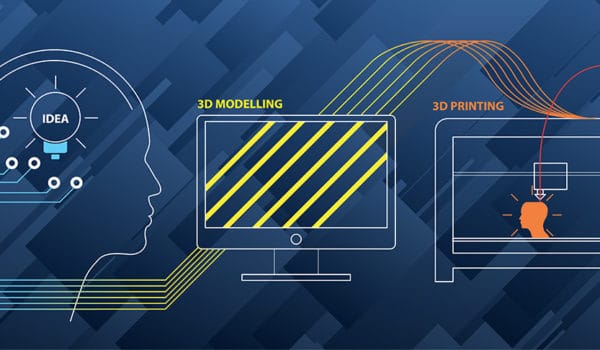A new milestone in China's rapid development of rail technology, Jiangxi Province in East China is testing the nation's first 800-meter-long monorail-mounted maglev with a top speed of 80 kilometers per hour, according to the media.
The Jiangxi University of Science and Technology and China Railway Science & Industry Group Co. developed an experimental maglev monorail, Xingguo, which has entered a crucial phase of testing and adjustment and is soon to begin its operational experimental stage. The Xingguo maglev monorail is the first suspension monorail in the nation to use permanent magnet maglev technology. The new technology may achieve elevation status without being powered, in contrast to superconducting maglev trains and conventional conductive maglev trains.
Maglev, or magnetic levitation, is a train transportation system that uses two sets of magnets: one to repel and push the train up off the track, and another to move the elevated train ahead, utilizing the lack of friction. There are both high-speed intercity maglev systems over 400 kilometers per hour and low-speed urban maglev systems 80 kilometers per hour to 200 kilometers per hour being built, developed, and under construction. Maglev trains travel along a magnetic guideway that controls the train’s stability and speed. The maglev monorail consists of a single rail that serves as a track for either passenger or freight vehicles. Rail is usually elevated, but monorails can run at grade, below grade, or in subway tunnels. Vehicles either hang from or cross a narrow guideway. The guideway that supports monorail vehicles is wider than the vehicle itself.
While propulsion and levitation do not require moving parts, the bogies can move in relation to the main body of the vehicle, and some technologies require retractable wheels at low speeds of less than 150 kilometers per hour. This is in contrast to electric multiple units, which may have several dozen parts per bogie.
Maglev Technology Is Classified into Two Types
Electromagnetic suspension (EMS), in which the train’s electronically controlled electromagnets attract it to a magnetically conductive usually steel track. Electrodynamic suspension (EDS) uses superconducting electromagnets or strong permanent magnets that create a magnetic field, which induces currents in nearby metallic conductors when there is relative movement, which pushes and pulls the train towards the designed levitation position on the guideway.
A proportion of the weight of the wheels was removed via magnetic levitation in the earliest applicable invention, U.S. Patent 714,851 (December 2, 1902) granted to Albert C. Albertson. The first full-size working model of the linear induction motor was created by British electrical engineer Eric Laithwaite, a professor at Imperial College London. In 1964, he accepted a position as a professor of heavy electrical engineering at Imperial College, where he continued his successful development of the linear motor. Linear motors became a common fixture on advanced transportation systems in the 1960s and 1970s because they do not require physical contact between the vehicle and the guideway. Since then, many transportation systems based on maglev have been designed by engineers and technologists, including Scmaglev, Vactrain, Hyperloop, Ringway, Transrapid, Linimo, and others.
On April 21, 2015, JR Central’s L0 superconducting maglev in Japan reached the highest-recorded maglev speed of 603 kilometers per hour (375 mph), which is 28 kilometers per hour (17 mph) higher than the previous TGV wheel-rail speed record. But there is a huge disparity in how these two quite distinct technologies operate and behave. The 13-minute TGV record was attained by accelerating down a 72.4 km (45 mi) incline. The TGV then needed to travel a further 77.25 km (48 mi) before stopping, making a total test distance of 149.65 km (93 mi). However, the MLX01 record was set on Yamanashi’s 18.4 km (11.4 mi) test track, which is just 1/8 the distance. No commercial operation using wheel-rail or maglev technology has ever attempted to travel over 500 kilometers per hour.
China is a leader in the development of maglev trains. In July 2021, the world’s fastest maglev transportation system with a speed of 600 kilometers per hour rolled off the assembly line in Qingdao, East China’s Shandong Province. It is reported that with electromagnetic guidance achieving zero friction during its operation, Xingguo runs at a speed of 80 kilometers per hour.
Photo: CGNT
You might also like:
Support us!
All your donations will be used to pay the magazine’s journalists and to support the ongoing costs of maintaining the site.
Share this post
Interested in co-operating with us?
We are open to co-operation from writers and businesses alike. You can reach us on our email at [email protected]/[email protected] and we will get back to you as quick as we can.










